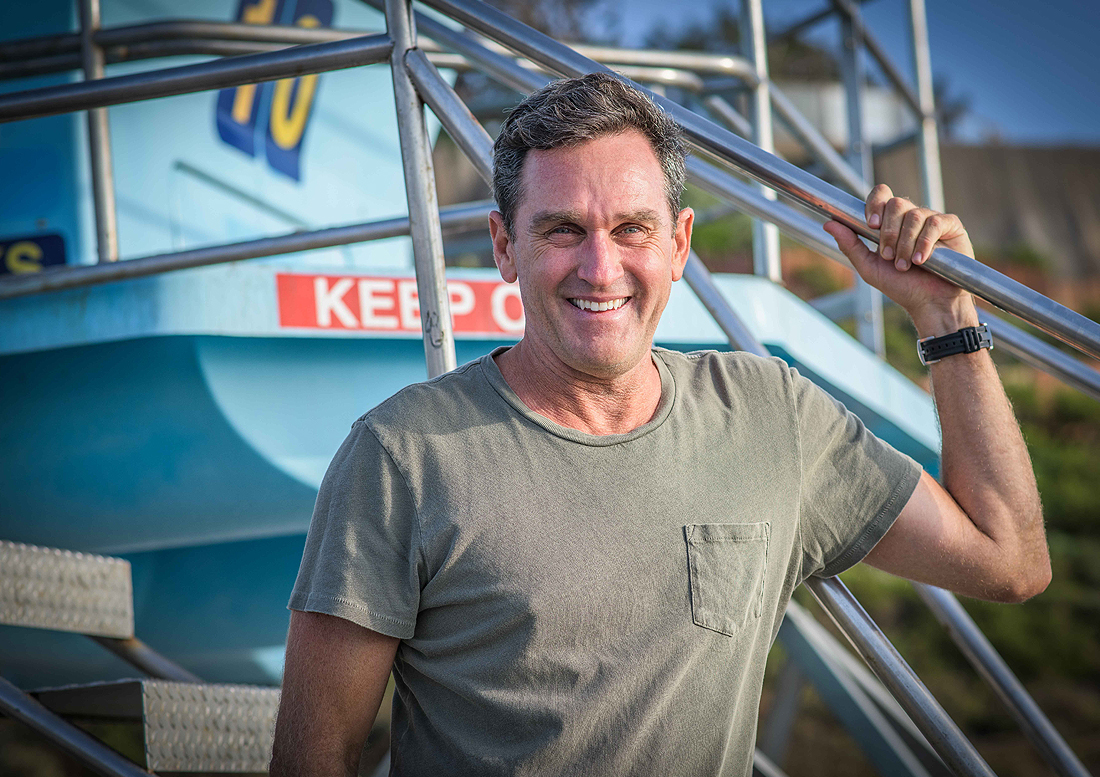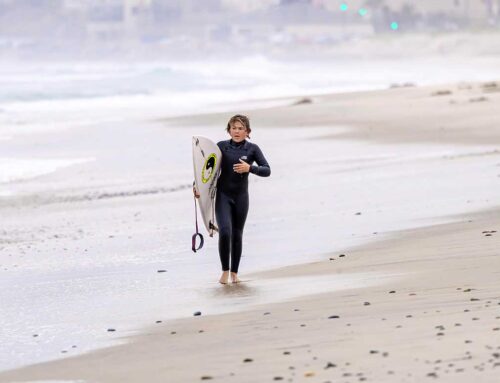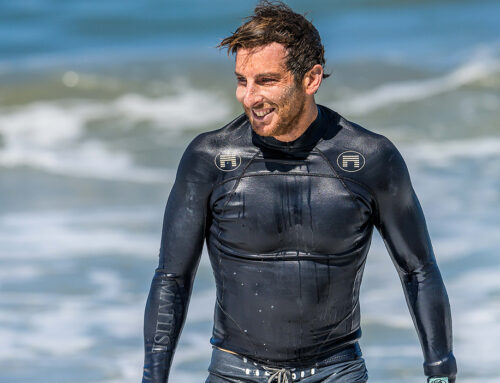Interviewed and photographed by Nicholas Paoni
At the ripe old age of 17 Taylor Steele crafted a recipe that helped to document, no define the sport and culture of surfing over the next 2 decades. He mixed equal parts of adrenaline and testosterone, added copious amounts of talent provided by surfers who would become the best of a generation, put in rock and heavy metal, and flavored it with his own vision and creative genius. Over time he would spice the mixture with wave chasing in exotic locations and road trips. The end result was a steady stream of surfing films that delighted audiences and earned him critical acclaim and numerous awards in the film industry. Oh, and he also makes Tequila!
I met Taylor at Seaside Reef, State Beach to discuss his career and love of surfing and this is what he had to say.
N. Hi Taylor and thanks for taking the time to chat with me today. Where did you grow up and how long have you been surfing?
T. I grew up in North County, Solana Beach and Encinitas, and I started surfing when I was twelve and I would walk down to Seaside.
N. When did you start filming surfers and who were your first subjects?
T. I started filming my friends. At Seaside we’d take turns doing 30 minutes each. You’d go in the water and surf and then you’d rotate out. So me and two other friends would take shifts. We started filming just the local pros; there was Brad Gerlach at the time, Colin Smith and a young Rob Machado started showing up a little while after we started filming. This was when we were 13-14 years old.

N. How did you learn film making? Did you have any formal training or are you self taught?
T. I did both. I taught myself how to edit using 2 VCRs. Then at Torrey Pines High School they had a video productions class, and I learned how to use the machines there.
N. You have made a number of surfing films. Do you have any favorites?
T. My favorites would have to be Momentum, because it sort of allowed me to change my plans to follow film making. From there the one that sticks out to me is Sipping Jet Streams, because it was a departure from my first film and it showed progression. My favorites are any time you can show change and an evolution.
N. You have worked with so many talented surfers over the years. They all could rip, but were there any that stood out to?
T. I would say the things that I’ve learned about filming surfers, the ones that worked the best are the ones that are team players. They’re thinking about the camera, they’re thinking about the project as a whole, and they are helping out. I’ve had people from Mick Fanning carrying tripods, and everything from the world champions doing that to other ones that wouldn’t surf when the waves were good. So the lesson that I try to instill in people wanting to do that as a profession is to help out, contribute- do the dishes, carry gear, ask the camera man what to do, be involved and be a team player and it goes a long ways.
N. I’m sure there are some fun stories of your adventures with these riders that didn’t make it to the screen. Can you share a one?
T. One that’s sort of fun in hindsight was when I flew all the way to the Sahara Desert right after Christmas, missing New Years. I landed there, drove 8 hours, it was a long mission to get there. My surfer didn’t show up and so he bailed, missed his flight and he ended up not going. Then the Customs took my camera, and then when I finally got there the locals kicked me out of the surf spot. So it was a perfect storm of the worst case scenarios. But in hindsight it was one of my funnier trips because it was so bad.
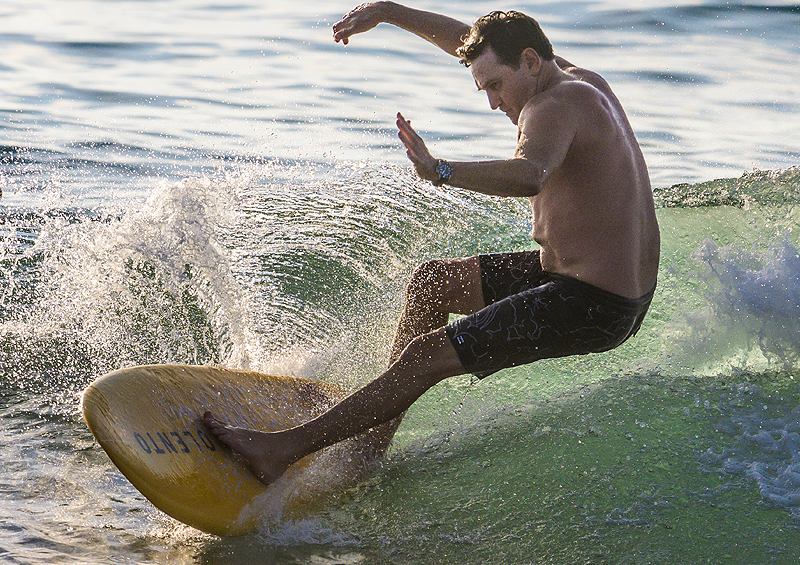
N. When you started out you were shooting your own films and eventually progressed to the point where you were directing others. Tell me a little about that transition for you, and do you ever miss holding the camera and looking through the viewfinder?
T. I started out doing the filming, editing, directing and producing- all of it. As I wanted to improve my films I realized that there were people that were better and very specialized in each thing, and I was able to get better product by outsourcing or collaborating with other departments. It was fun because it opened up my mind to seeing other shots. While they were composing one shot I would see the next shot or I’d be able to interact with the surfers to get a more complete picture. As far as missing looking through the viewfinder, on all those trips I would always film. I have this 600 mm lens that I still have to this day. I’ll put it on the newest technology camera and I would always shoot an angle, even it we had five other angles, I would still shoot one.
N. The “In Focus” series I’m doing for the Encinitas Board Riders Club features 3 local photographers who have had a substantial and lasting effect on the sport of surfing; you, Steve Sherman and Todd Glaser. You each have taken separate and unique paths in your careers; Todd shoots action from the water, Steve has concentrated on portraits and you make films. Did you guys interact much with each other in those early years, and do you ever do projects together now?
T. Yes, so Steve, I saw his stuff in the early surfer magazines when he was first getting in there and I hired him to shoot an ad for the third film I made called Focus. He shot this nice portrait of Kelly and Shane and Rob when they were like 21. It’s a great shot. That was 30 years ago now.
And then Todd Glaser, I would see him running down the beach at Seaside shooting body boarders and I was always like “what are those guys doing”. Then later Rob introduced me to him. I went on a trip with him to Peru, and from there we made a film together. It seems like every other year there is a small project that me and Todd Glaser would be doing. And then Steve, we’re doing a photo shoot in a couple days. So we are still intertwined. I try to support locals.
N. After making surfing films for 20 years you moved to producing creative content in a corporate environment, for Corona in Australia and now for your own Tequila company. First, what motivated that change, and second, how does shooting commercials and corporate content compare to movies for you?
T. After making surf films for a long time, that business grew pretty big. I think I had 12 people working for me full time. We did our own distribution and marketing and everything. Then DVDs disappeared. I had a young family and I had to make a transition, so I transitioned to making commercials. It was a scary thing to do, to learn a new thing. I had to learn a whole new skill set, from how you communicate to 50 people on a set with a two million dollar budget and what they are looking for and how to get the performance that you want. So it was a big learning curve, a completely different animal. But I missed that independent film making side, so then I started doing National Geographic documentaries. That had that same sort of energy of a run and gun surf movie. But it’s run and gun shooting Rhinos or sharks or all these other things.
N. A lot has changed in the technology used in the making of films. I read that you are using virtual reality in some of your work. Can you briefly take me through the evolution of the technologies that you have used over the years, and what works best for you now.
T. I would say that a lot of times there’s a resistance to something new, whether it’s technology or different kinds of films. I try to embrace new technologies, learn and decide whether I want to use it in a future platform. I think the story dictates the technology. I’ve worked with virtual reality when it first started out. I actually worked with HD cameras when they were first dropped. I worked with Best Buy back then, because they were trying to promote high definition TV when they first came out. So I guess the way I approach new technology is that there are a lot of perks with it, but don’t let that be the driving force on the story telling or the way that you make content. Always lead with trying to do something different than what’s currently been done, or tell a story that hasn’t been told before as your driving force. Then let that funnel you towards the right technology.
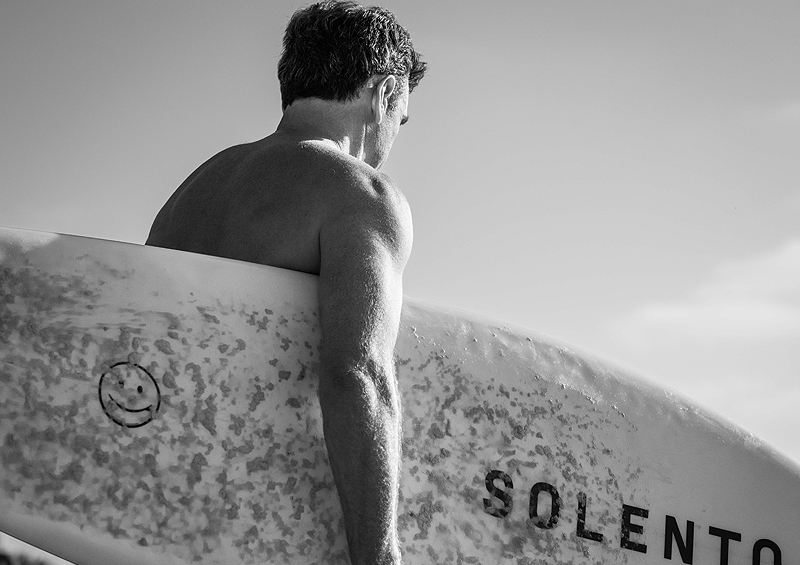
N. What are your thoughts on AI and the film industry?
T. I’m trying to learn it, not to necessarily use it, but just to know the pros and cons of it. I think that I’m surprised that AI is starting with the Arts when in reality we want AI to do the mundane things so the artists can do their arts. So that was a big surprise for me. I think right now AI is submitting a C- product. I’m sure that will change, but I think it’s really like trying to figure out how to create in a human way because we all have our own stories, memories and it’s how we create as an artist and it’s what dictates what we do differently from the other artists. AI doesn’t have those stories and backgrounds, so it’s just creating a version that’s a C- in my opinion.
N. One of the things that impressed me about your career as I prepared for this interview is the fact that you are giving back to both the film and surfing communities. Let’s start with film. You now teach Master Classes for new filmmakers. Can you tell me about that?
T. When someone is looking at doing films it feels overwhelming. They don’t know where to begin. They feel like they already want to be at the top, but in reality they don’t have the knowledge or the cameras to do it. So my advice, what worked for me, is you just jump in and do it. You just start doing it and start trying things. You just get better over time like practice of anything. The more you do it the better you get at it. So for me it’s trying to inspire kids and adults to start trying and learn and sort of have fun with it, and then see where it takes them. Not for even the career side of it, just for an outlet and a release and a way to connect with your community.
N. Over the last two years you have given back to the local surf community through the Solento Surf Festival. Describe the Festival for folks that may not be familiar with it.
T. My thought process was as follows: I’ve moved from North County where I grew up. I moved to Bali and lived there for 5 years. Then I moved to Australia and lived there for 5 years. Then I moved to New York City and I lived there for 5 years. So when coming back to North County I found myself comparing it to some of the other places I lived, for better or worse. There are some things that I like and some things I didn’t like. Some of the things I felt were missing was a real community connection where we had an opportunity to all come together and really connect. So instead of complaining about it I wanted to create something to inspire everybody to connect.
N. I know that you still surf. What role does riding play in your life right now?
T. I’ve been lucky that surfing has always been a way for me to connect with Nature and disconnect from work and disconnect from filming and just play in the ocean. My parents both surfed, and it was a beautiful relationship that formed because we were able to play together. When you can play with your parents it breaks down some different barriers that you don’t even know you needed to break down. So I’ve always had this sort of interaction with the ocean. One, it felt like family and two, it has really made me feel grounded and connected no matter where I was living.
N. One final question. Female surfing has come a long way since you started making films. Have you thought about going back to your roots and making a surf movie sequel staring some of today’s amazing female riders?
T. I think there’s some amazing surfing being done by the female surfers like Erin Brooks, Caitlin Simmers, Sierra Kerr, there’s too many to list actually. They remind me a lot of the Momentum generation, of Kelly and Rob and Shane. They were all coming in together, pushing each other, and they were just coming in with such a different angle than their predecessors. So for me, if I was to come back that’s where I would be looking to make something and showcase that kind of surfing.
N. Thanks for taking the time to chat with my Taylor, it’s been a real pleasure.
This completes the “In Focus” series. On behalf of the Encinitas Board Riders and myself I’d like to thank Todd Glaser, Steve Sherman, and Taylor Steele for the generous gift of their time to tell their stories. Individually each has made an awesome contribution to the sport of surfing. Taken together their impact has been off the charts
The transcript has been edited for brevity.

